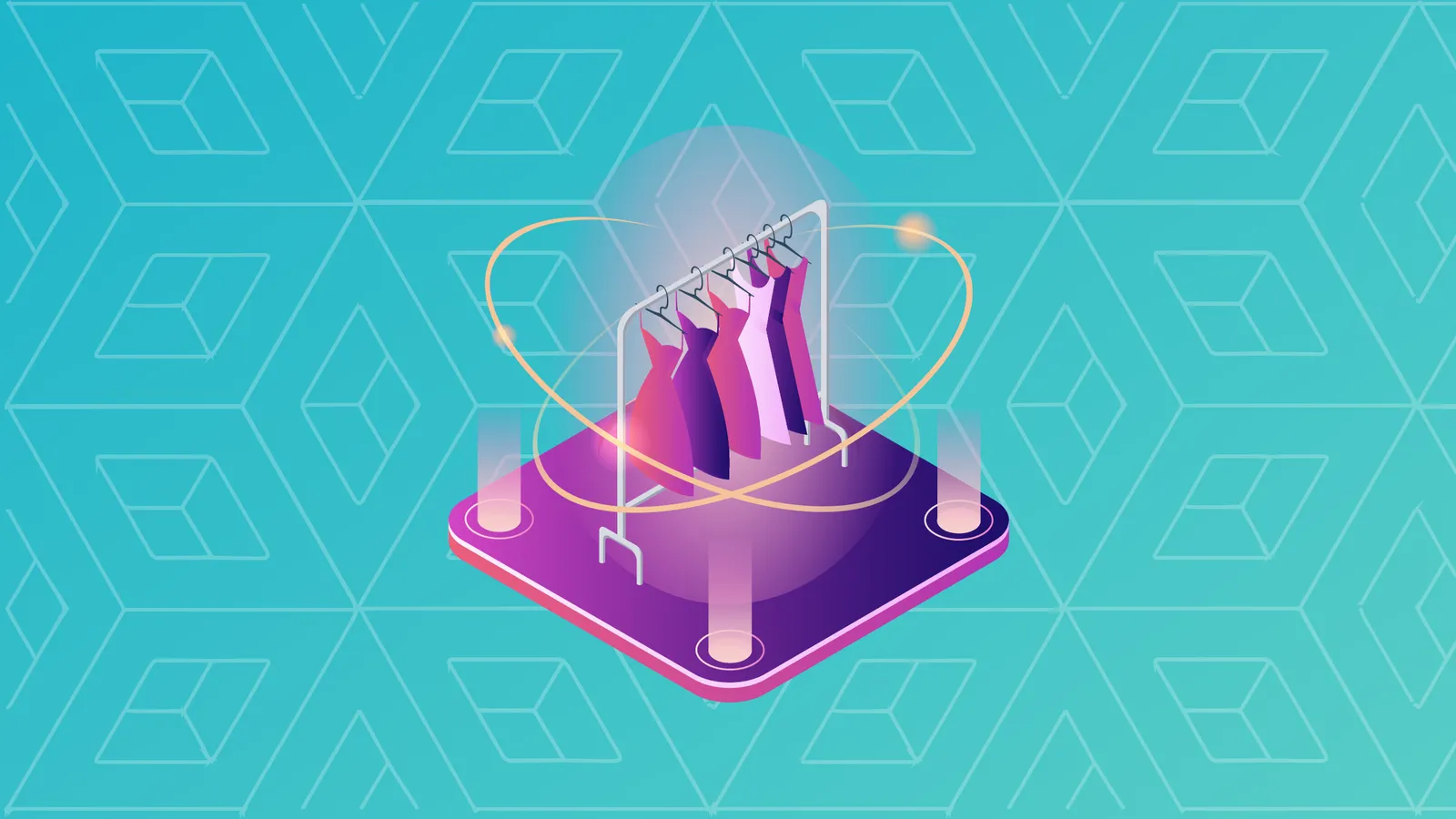Web3 is what many imagine to be the future of the internet. A work in progress, Web3 refers to an internet that utilizes the power of blockchains and cryptocurrencies to shift from a centrally-owned system to one that is more broadly decentralized. Among the goals of Web3—though there is no single definition for this next iteration of the internet, and many participants in the development of Web3 have differing viewpoints of how it should operate—are the redistribution of control away from a small number of powerful companies, the maintenance of trust in a decentralized environment, and the capacity to smoothly and easily transfer value online.
Web3 has the potential to upend nearly every industry and sector, or at least to provide exciting new ways of creating value, connections, and ideas. The fashion industry is no exception. Web3 could offer creatives both inside and outside of the fashion industry a host of new tools and capabilities for generating ideas and bringing their projects to fruition. Below, we’ll explore some of the ways that Web3 could revolutionize the fashion industry, beginning with some context about how the current iteration of the internet, commonly known as Web2 or Web 2.0, achieved something similar over a decade ago.
Web2 and the Fashion World: A Sign of Things to Come?
Supporters of the Web3 project commonly view it as a third major iteration of the internet. From this perspective, the earliest version of the internet was primarily “read-only.” That is, it consisted of content created and offered by centralized producers, with the vast majority of participants in the internet ecosystem acting only as viewers of that content. In the fashion world, this so-called Web1 or Web 1.0 content would include the websites of major fashion companies and brands. Users would be able to view this content—potentially selecting items to buy, even—but would have little power to create for themselves.
The advent of Web2 is associated with a significant shift toward user creation. This phase of the internet could be considered “read and write,” as it simultaneously encompassed both the passive content of the earliest version of the internet and, now, platforms including social media and blogs that allowed users an easy way to create their own content. This is the current version of the internet.
The rise of Web2 was transformative for the fashion world and particularly for advancing a shift in high fashion trends from a small elite to a much wider audience. In the early days of Web2, street-style blogs like The Sartorialist became massively popular. These blogs allowed individuals both within and outside of the traditional world of high fashion the power to create content and disseminate it widely. This tradition has evolved alongside the development of new social media platforms and tools: Twitter and Instagram fashion influencers then gave rise to TikTok influencers today. All told, this shift has helped to dramatically broaden the world of high fashion, making it accessible to people all over the world who may not have otherwise been able to engage with this type of content in a Web1 environment, let alone to create it themselves.
The Possibilities of Web3
It’s likely that Web3 will only further accelerate this opening up and democratization of the fashion world. In a fully functional Web3 environment, an individual designer or keen amateur in the fashion space would theoretically have relatively easy access to all of the tools necessary to design, create, market, and sell their works—be they physical or digital.
How might this work in reality? The power of Web3 to provide direct transactions between individuals, without the oversight or complication of a third party but with an equal or greater degree of security and trust, means that a designer can offer his or her works for sale directly to consumers. There is no need to get buy-in from a retailer, a fashion house, or an e-commerce company, nor is there a need to incorporate a point-of-sale or payment transfer provider. In this case, creators will have the most direct access ever to the widest possible pool of consumers. For many customers, particularly those in the developed world and those already able to access the fashion space, this may not be a dramatic difference. But for people who might otherwise not have had a way to access fashion—because of, say, not having a bank account or a digital financial presence—this will open up a whole new world of possibility.
With Web3. a designer can offer their works for sale directly to consumers
Without the presence of a series of third party companies to make it possible for designers to create and sell their wares, designers will be able to keep a much larger share of their revenue. This could make it easier to succeed as a designer in a competitive and challenging industry. Already, independent designers have managed to earn a living producing fashion NFTs, digital skins used in video games, and even digital-only fashion houses. By not having to pay a portion of their sales to large fashion companies, retailers, or similar intermediaries, these designers stand a better chance of being able to support themselves through their work in fashion.
Even in Web3 there is still power in collaboration, of course. Decentralized autonomous organizations (DAOs) like Digitalax, a Web3 fashion platform that provides independent designers support, recognize this and already seek to capitalize on it. Similarly, Metafactory is a DAO that presents itself as the first community-owned and operated fashion brand. These and similar projects like SYKY represent a shift of power away from a small number of central fashion companies and toward a much wider array of like-minded creatives and small business owners. Up-and-coming designers that have long faced significant hurdles with a fashion press and industry dedicating disproportionate resources and attention toward major companies will have new avenues for gaining market share.
For major fashion companies, Web3 provides a number of opportunities as well. Many of these companies, from L’Oréal to LVMH and more, have already taken advantage of many of the offerings which will be central to the Web3 ecosystem. These and other companies have offered fashion-focused NFTs, digital clothing, collaborations with the gaming world, and a new focus on decentralization. For some of these companies, expanding into the world of digital “skins” in video gaming has already provided access to a massive and previously-underrepresented market of teenagers and pre-teens. These and other companies are also already taking advantage of the powerful applications of digital fashion, which exists in a virtual space unbounded by the limits of physical materials or even gravity.
Web3 is also closely linked with a host of new and developing technologies, including virtual and augmented reality, metaverse, artificial intelligence (AI), and more. While we explore the connects and impact of these technologies and the fashion world in greater depth in other parts of this course, it’s important to note that Web3 is likely to only continue to expand access to these powerful new tools to users, making them that much more accessible and approachable for consumers and creators in the fashion space.


